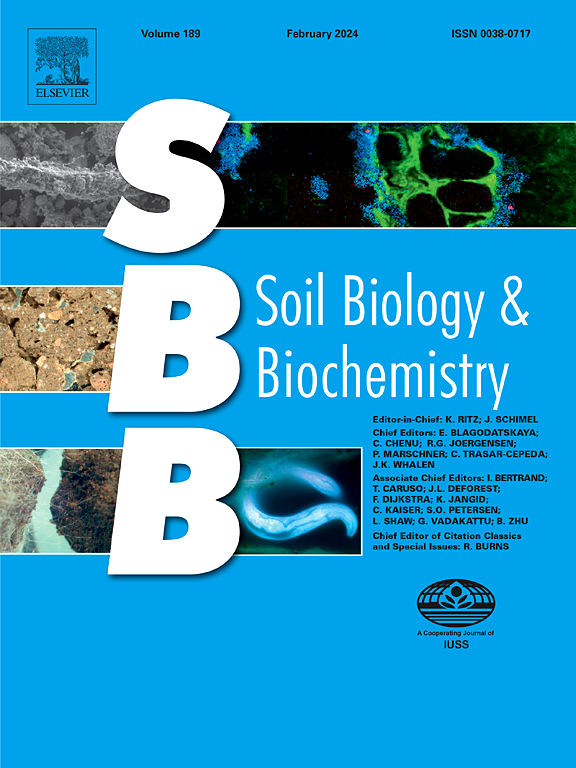A new concept for modelling the moisture dependence of heterotrophic soil respiration
Abstract
The moisture dependence of heterotrophic soil respiration is a key factor affecting the uncertainty in predicting the response of soil organic carbon (SOC) to global warming. Considering that heterotrophic respiration from unsaturated soils is primarily driven by microbial reduction of oxygen (O2), we propose a new concept to model the respiration by tracking dissolution of gaseous O2 and its subsequent diffusion and microbial reduction at hydrated microsite in the pore space of soil. Total respiration from a soil sample is calculated by summing the O2 reduced by all microbes in the soil. This allows us to separate physical processes and microbial activity occurring at microsites and incorporate pore-scale substrate heterogeneity, macropores and other factors explicitly into the model. We show that scaling up these microscopic physical processes over a soil sample makes soil moisture, temperature, and other factors inherently integrated in their influence on microbial respiration, and that a change in one of them affects the response of the respiration to the change in others. Comparison with experimental data shows the model can reproduce the diverse moisture-respiration relationships observed from various experiments and predict the change in soil respiration with temperature. It is noteworthy to point out that previous studies had attributed the variations in the moisture and temperature sensitivity of heterotrophic soil respiration to microbial adaptation; herein we demonstrate that changes in soil structure and physical processes can also give rise to such variations. Distinguishing between physical and microbial effects in data analysis and modelling is therefore crucial, as mistaking physical effects for microbial adaptation would lead to errors in predicting the response of SOC to environmental changes.

 求助内容:
求助内容: 应助结果提醒方式:
应助结果提醒方式:


